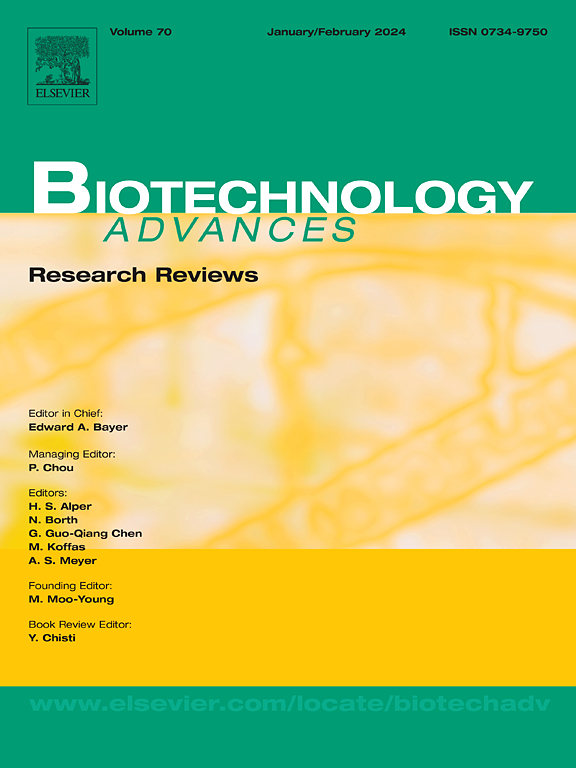Antimicrobial peptides in nematode secretions – Unveiling biotechnological opportunities for therapeutics and beyond
IF 12.1
1区 工程技术
Q1 BIOTECHNOLOGY & APPLIED MICROBIOLOGY
引用次数: 0
Abstract
Gastrointestinal (GI) parasitic nematodes threaten food security and affect human health and animal welfare globally. Current anthelmintics for use in humans and livestock are challenged by continuous re-infections and the emergence and spread of multidrug resistance, underscoring an urgent need to identify novel control targets for therapeutic exploitation. Recent evidence has highlighted the occurrence of complex interplay between GI parasitic nematodes of humans and livestock and the resident host gut microbiota. Antimicrobial peptides (AMPs) found within nematode biofluids have emerged as potential effectors of these interactions. This review delves into the occurrence, structure, and function of nematode AMPs, highlighting their potential as targets for drug discovery and development. We argue that an integrated approach combining advanced analytical techniques, scalable production methods, and innovative experimental models is needed to unlock the full potential of nematode AMPs and pave the way for the discovery and development of sustainable parasite control strategies.
线虫分泌物中的抗菌肽-揭示生物技术治疗和其他领域的机会。
胃肠道(GI)寄生线虫威胁粮食安全,影响全球人类健康和动物福利。目前用于人类和牲畜的驱虫药受到持续再感染和多药耐药性的出现和传播的挑战,强调迫切需要确定新的控制靶点以进行治疗开发。最近的证据表明,人类和牲畜的胃肠道寄生线虫与常驻宿主肠道微生物群之间存在复杂的相互作用。在线虫生物体液中发现的抗菌肽(AMPs)已成为这些相互作用的潜在效应器。本文综述了线虫amp的发生、结构和功能,强调了它们作为药物发现和开发靶点的潜力。我们认为,需要将先进的分析技术、可扩展的生产方法和创新的实验模型相结合的综合方法来释放线虫amp的全部潜力,并为发现和开发可持续的寄生虫控制策略铺平道路。
本文章由计算机程序翻译,如有差异,请以英文原文为准。
求助全文
约1分钟内获得全文
求助全文
来源期刊

Biotechnology advances
工程技术-生物工程与应用微生物
CiteScore
25.50
自引率
2.50%
发文量
167
审稿时长
37 days
期刊介绍:
Biotechnology Advances is a comprehensive review journal that covers all aspects of the multidisciplinary field of biotechnology. The journal focuses on biotechnology principles and their applications in various industries, agriculture, medicine, environmental concerns, and regulatory issues. It publishes authoritative articles that highlight current developments and future trends in the field of biotechnology. The journal invites submissions of manuscripts that are relevant and appropriate. It targets a wide audience, including scientists, engineers, students, instructors, researchers, practitioners, managers, governments, and other stakeholders in the field. Additionally, special issues are published based on selected presentations from recent relevant conferences in collaboration with the organizations hosting those conferences.
 求助内容:
求助内容: 应助结果提醒方式:
应助结果提醒方式:


